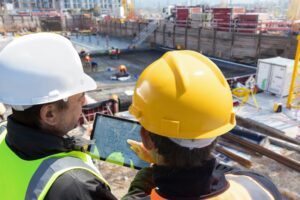In 1980, Joe Lstiburek could have killed his parents. Literally.
Back then, he was a young Canadian engineer obsessed with energy efficiency. So, when government grant programs became available to help homeowners insulate their homes and switch to gas appliances, Lstiburek convinced his parents to go all in. They sealed up their house, swapped out the oil furnace and called it progress.
But airtight houses don’t breathe. Moisture built up and appliances vented poorly. And carbon monoxide nearly took out the senior Lstibureks.
That was hard-earned wisdom for their son, a Ph.D., professional engineer, ASHRAE Fellow and principal at Building Science.com. But as he said, “Doing stupid stuff” may be the secret behind his impressive career as a building scientist. Now, decades later, Lstiburek is one of the most respected names in the field—and the lessons from that near tragedy are as relevant as ever.
What Is Building Science?
Building science studies how air, heat and water move through structures to understand “the physical behavior of the building as a system and how this impacts energy efficiency, durability, comfort and indoor air quality,” according to the Whole Building Design Guide.
But Lstiburek sums it up more succinctly: “Building science is the physics and practice of environmental separation—keeping the outside out and the inside in.” In the past century, the structural integrity of U.S. buildings has been excellent, he said. And the Chicago and Boston fires in the 1870s transformed U.S. fire codes forever, emphasizing noncombustible materials like brick and stone.
The issues left to address were water, heat and moisture, the culprits responsible for rot, corrosion and mold.
The Perfect Wall—and Why Most Buildings Don’t Have One
“Most of the damage that happens to a structure—expansion, contraction, corrosion, decay and ultraviolet radiation—are functions of temperature,” Lstiburek said.
To stop the destruction, Lstiburek points to the perfect environmental separator: a four-layer system every building should have. “The perfect wall has water, air and vapor control layers directly on the structure and a thermal control layer outside them all.”
Flip the perfect wall on its side and you achieve the perfect roof. Flip it again and you’ve got the perfect slab. But while the theory is simple, modern building materials complicate things quickly.
“Even the Dumbest of the Three Little Pigs …”
It used to be that homes were made of rocks and trees. If they got wet, they dried quickly, thanks to what Lstiburek calls the “massive energy exchange across the enclosure.” But materials have changed.
“Even the dumbest of the three little pigs didn’t build his house out of paper,” Lstiburek said. “But we’re building out of moisture-sensitive materials and totally altering the energy exchange.”
Paper-faced gypsum board has replaced plaster and OSB has replaced wood. Materials like these trap moisture instead of shedding it—and that’s where the real trouble begins.
The Five Problems Nobody Saw Coming (Until It Was Too Late)
In his article Five Things, Lstiburek lays out five construction trends since the 1980s that slowly make buildings worse:
- Increased thermal resistance that reduces the drying potential of the enclosure.
- Decreased permeability of the linings inside and outside of building enclosures, massively reducing breathability, combined with dense insulation between linings and windows that allow water injection.
- Water and mold sensitivity of building materials causing rot and unhealthy conditions.
- Lower ability of building enclosures to store and redistribute moisture, also producing rot and mold.
- Complex three-dimensional airflow networks that couple the building enclosure to the breathing zone of the occupied space via the mechanical system.
The kicker: These issues unfold slowly, sometimes decades after initial construction.Lstiburek said these issues aren’t going away—structures will have more insulation, impermeable and mold- and moisture-sensitive materials and hollow areas that allow potentially toxic airflow. That takes us back to the misguided renovation of his parents’ home.
The Deadly Insulation and Furnace Replacement Programs
In the 1970s, the Canadian Home Insulation Program gave money to homeowners to insulate their attics. The Oil Substitution Program paid them to replace their oil furnaces with gas. Lstiburek encouraged his parents to sign up for both.
But the caulking and sealing to increase energy efficiency also resulted in the rotting of walls and attics—and carbon monoxide poisoning when new gas appliances weren’t adequately vented to the outside.
Lstiburek fortunately recognized the risk early enough to make extensive modifications to their home before it killed his parents. Others weren’t as lucky and suffered tragic and unnecessary deaths.
The United States as Building Science Guinea Pig
In recent decades, the time between poor choices and consequences for buildings and occupants has shrunk from more than 20 years to 5–10 years, according to Lstiburek. The result: Lawyers, insurers and regulators get involved earlier—and the AEC community increasingly faces liability issues.
“Why would we want the attorneys to teach us building science?” Lstiburek asked.
We wouldn’t. Luckily architects, engineers and contractors have more chances to learn building science than ever, especially in the U.S. Lstiburek said he believes the country is the world leader in building science, partly because we have almost every climate zone on earth. That makes the United Sates the ultimate testing ground for what works in construction—and what doesn’t.
“I don’t want other countries to make the mistakes we’ve made in North America,” Lstiburek said. “I look forward to the United States providing a leadership role and helping the rest of the world stay out of trouble.”
First, Do No Harm
Lstiburek’s message is blunt: Energy efficiency alone isn’t enough. If you don’t understand building science, you risk damaging buildings and killing or sickening the people inside them.
He’s not trying to scare you. He’s just trying to stop you from becoming the next story.





















